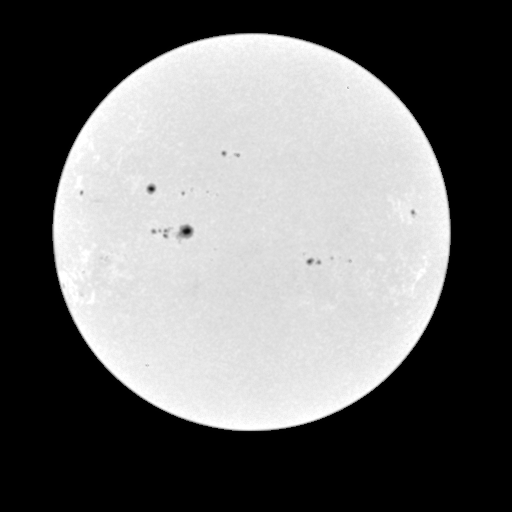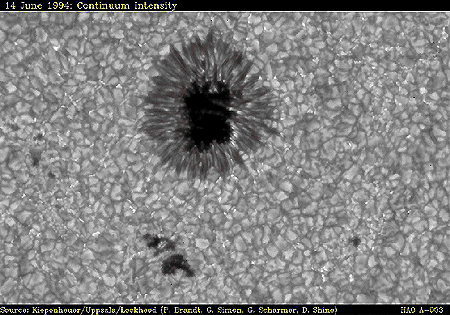The Photosphere
 Our Sun's apparent
surface is called the photosphere. Because the Sun is completely
made of gas there is no hard surface like there is on earth. Nonetheless,
when we look at the Sun there is a depth past which the gas begins to get
so dense that we cannot see through it.
Our Sun's apparent
surface is called the photosphere. Because the Sun is completely
made of gas there is no hard surface like there is on earth. Nonetheless,
when we look at the Sun there is a depth past which the gas begins to get
so dense that we cannot see through it.
The photosphere is the disk you see in the sky when you look at the
Sun through a filtered telescope or as a projection on a piece of paper.
 You should never look at the Sun directly, it can cause
blindness.
You should never look at the Sun directly, it can cause
blindness.
When you look at the Sun with a filtered telescope you can see evidence
in the photosphere of the convective bubbles in the convection zone below.
The continuous rising and falling of hot and cool bubbles produces a pattern
on the surface of the Sun that is referred to as granulation. Below
is a blown-up photograph of granulation around a sunspot on the
photosphere.


Back to
the Tour!
|
 |
Image Credits:
Sun in Visible Light: Lockheed
Martin Palo Alto Research Lab
Sunspot and Granulation: P. Brandt, G. Simon,
G. Scharmer, D. Shine (Kiepenheuer, Uppsala, Lockheed)
 Our Sun's apparent
surface is called the photosphere. Because the Sun is completely
made of gas there is no hard surface like there is on earth. Nonetheless,
when we look at the Sun there is a depth past which the gas begins to get
so dense that we cannot see through it.
Our Sun's apparent
surface is called the photosphere. Because the Sun is completely
made of gas there is no hard surface like there is on earth. Nonetheless,
when we look at the Sun there is a depth past which the gas begins to get
so dense that we cannot see through it.  You should never look at the Sun directly, it can cause
blindness.
You should never look at the Sun directly, it can cause
blindness.

